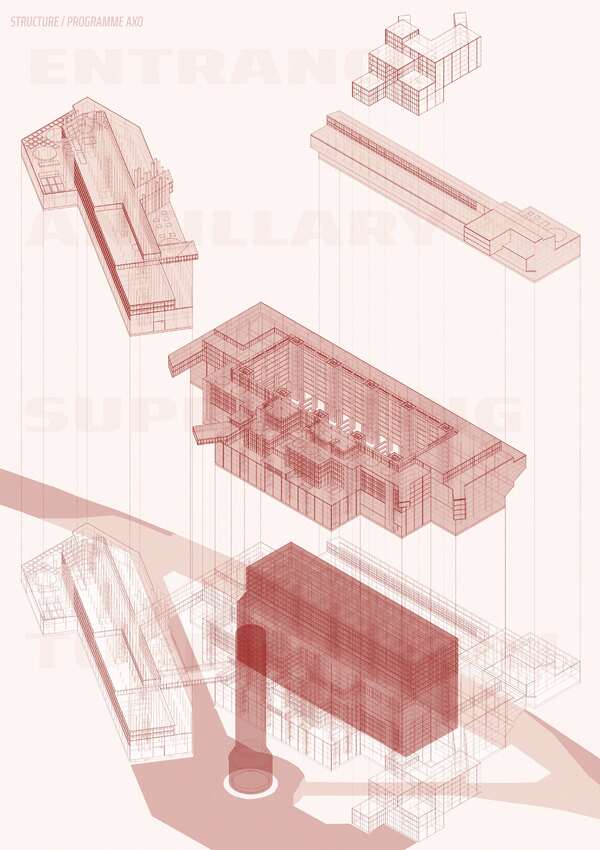What is the future of the UK service station? My project questions this and what network the service station of the future should serve as the site matures and needs change.
Initially looking at historic and contemporary examples of the typology, I applied Sylvia Crowe's theory of 'zones of influence' to visually map their impact on the surroundings, both positive and negative. From here, research into the future of the UK energy industry showed that a transformation of the system as a whole would allow the future needs to be met whilst divesting from fossil fuels and investing in renewables; primarily hydrogen in the case of my project. These two areas are the key drivers of my scheme: managing the influence/impact of my scheme by creating a sustainable structure-scape that matures and grows as the project ages and providing a jump-start site for the UK hydrogen industry with an economy of concentration, reducing in-use costs and mitigating the transport and storage requirements of high-risk materials.
The use of the public realm is an important part of my project with ideas of landscaping drawn from post-war power stations like Trawsfynydd whilst the form derives from the glass cathedral typology seen at Fawley. The sloping hill and landscaping surrounding the core buildings help disguise the structure and almost create a tunnel over the adjacent motorway. This can be most clearly seen in the 1:1250 landscape model, illustrating the interaction between structure and landscape in ways less visible in the digitally rendered images.
I am currently looking for a full-time position as a Part 1 Architectural Assistant.


